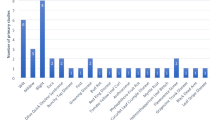Abstract
Unmanned aerial vehicles (UAVs)/drones are used to capture and monitor real-time data for various applications. Different sensors may be mounted on the UAV like 4K RGB camera, RedEdge-M and many others. 4K camera is used to capture an image in RGB bands, and RedEdge-M captures an image in five bands namely Blue, Green, Red, RedEdge and Near Infrared having a center wavelength of 475, 560, 668, 717 and 840 nm, respectively. Quality of an image can be judged with its basic two properties, i.e., spatial and spectral information. The images obtained by these sensors are useful for monitoring various targets. One of the most important challenges for any UAV sensor image is a shadow that affects a lot the quality of an image. A shadow can hinder the identification of the target and also affect the vegetation parameters which highly depend on the band values. Huge change in the class labels has been identified during classification because of shadow. Band values can highly suffer from shadow, and thus, it is required to minimize the shadow effect without compromising the image quality. Therefore, in this paper, an attempt has been made to minimize the shadow effect by proposing an algorithm that is based on spatial distribution of neighboring pixels and is compared with other known techniques. The study area chosen is an agriculture field nearby Roorkee region, which lies in the northern part of India having central latitude–longitude as 29.9457°N, 78.1642°E. The images were captured using DJI Phantom 3 pro at an altitude of 100 m which provides a spatial of 0.05 m. It is observed that the proposed method shows better results as compared to others.








Similar content being viewed by others
References
Adeline, K. R. M., Chen, M., Briottet, X., Pang, S. K., & Paparoditis, N. (2013). Shadow detection in very high spatial resolution aerial images: A comparative study. ISPRS Journal of Photogrammetry and Remote Sensing, 80, 21–38.
Agarwal, A., Singh, A. K., Kumar, S., & Singh, D. (2018). Critical analysis of classification techniques for precision agriculture monitoring using satellite and drone. IEEE 13th International Conference on Industrial and Information Systems (ICIIS), 2018, pp. 83–88.
Anoopa, S., Dhanya, V., & Kizhakkethottam, J. J. (2016). Shadow detection and removal using tri-class based thresholding and shadow matting technique. Procedia Technology, 24, 1358–1365.
Cucchiara, R., Grana, C., Piccardi, M., Prati, A., & Sirotti, S. Improving shadow suppression in moving object detection with HSV color information. ITSC 2001. 2001 IEEE Intelligent Transportation Systems. Proceedings (Cat. No.01TH8585), 2001, pp. 334–339.
DJI-The World Leader in Camera Drones/Quadcopters for Aerial Photography. DJI Official. [Online].https://www.dji.com/matrice100/info. Accessed 15 Jan 2019.
Lottes, P., Khanna, R., Pfeifer, J., Siegwart, R., & Stachniss, C. (2017). UAV-based crop and weed classification for smart farming. Robotics and Automation (ICRA), 2017 IEEE International Conference on, pp. 3024–3031.
Milewski, T. (2017). The use of satellite pictures and data provided by drones for the purposes of identification of crops and assessment of plant production. ICAS VII 2016 Seventh International Conference on Agriculture Statistics Process.
Movia, A., Beinat, A., & Crosilla, F. (2015). Comparison of unsupervised vegetation classification methods from VHR images after shadows removal by innovative algorithms. International Archives of Photogrammetry Remote Sensing and Spatial Information Sciences, XL-7/W3, 1269–1276.
Murugan, D., Garg, A., & Singh, D. (2017). Development of an adaptive approach for precision agriculture monitoring with drone and satellite data. IEEE Journal of Selected Topics in Applied Earth Observations and Remote Sensing, vol. 10, no. 12, pp. 5322–5328.
Myint, M. S., Johnson, Y. J., Tablante, N. L., & Heckert, R. A. (2006). The effect of pre-enrichment protocol on the sensitivity and specificity of PCR for detection of naturally contaminated Salmonella in raw poultry compared to conventional culture. Food Microbiology, 23(6), 599–604.
Popovic, M., Vidal-Calleja, T., Hitz, G., Sa, I., Siegwart, R., & Nieto, J. (2017). Multiresolution mapping and informative path planning for UAV-based terrain monitoring. ArXiv Prepr. ArXiv170302854, pp. 1382–1388.
Radovic, M., Adarkwa, O., & Wang, Q. (2017). Object recognition in aerial images using convolutional neural networks. Journal of Imaging, 3(2), 21.
Sanin, A., Sanderson, C., & Lovell, B. C. (2012). Shadow detection: A survey and comparative evaluation of recent methods. Pattern Recognition, 45(4), 1684–1695.
Sasi, R. K., & Govindan, V. K. (2016). Shadow removal using sparse representation over local dictionaries. Engineering Science and Technology, an International Journal, 19(2), 1067–1075.
Silva, G. F., Carneiro, G. B., Doth, R., Amaral, L. A., & de Azevedo, D. F. G. (2018). Near real-time shadow detection and removal in aerial motion imagery application. ISPRS Journal Photogrammetry and Remote Sensing, 140, 104–121.
Singh, A. K., Swarup, A., Agarwal, A., & Singh, D. (2017). Vision based rail track extraction and monitoring through drone imagery. ICT Express, 5, 250–255.
Yang, C., Everitt, J. H., Du, Q., Luo, B., & Chanussot, J. (2013). Using high-resolution airborne and satellite imagery to assess crop growth and yield variability for precision agriculture. Proceedings of the IEEE, 101(3), 582–592.
Acknowledgement
Authors would like to thank RailTel Corporation of India Ltd. Delhi and Space Application Centre, Ahmedabad, for supporting this work.
Author information
Authors and Affiliations
Corresponding author
Additional information
Publisher's Note
Springer Nature remains neutral with regard to jurisdictional claims in published maps and institutional affiliations.
About this article
Cite this article
Agarwal, A., Kumar, S. & Singh, D. An Adaptive Technique to Detect and Remove Shadow from Drone Data. J Indian Soc Remote Sens 49, 491–498 (2021). https://doi.org/10.1007/s12524-020-01227-z
Received:
Accepted:
Published:
Issue Date:
DOI: https://doi.org/10.1007/s12524-020-01227-z




